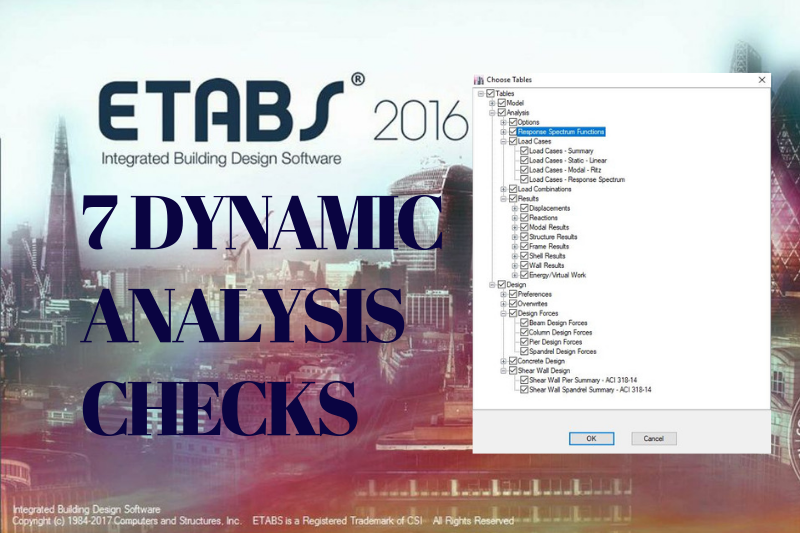
After the 3 Post Major Analysis and Modeling Checks have been cleared, the designer should review the structural arrangement and the overall dynamic characteristics of the model. To ensure that our model complies with the code requirements, a separate check and review on the model should perform by the designer. Here are the 7 Dynamic Analysis Checks and review in an ETABS model that every structural design engineer should consider.
1. Base Shear Check
Base Shear, V is the total design lateral force or shear force at the base of the structure. Static Force or the Equivalent Lateral Force Procedure of calculating base shear should perform under the UBC 97, clause 1630.2.1 and or as per Equation 12.8-1 of ASCE 7-10 codes. The static base shear will be used to calculate scale factors for the model to be balanced with dynamic base shear as specified by the code.
The base shear forces to use in the design will be calculated using the Auto Load Function of ETABS Program using the “Equivalent Lateral Force Procedure” and the “Dynamic Analysis Procedures” as set out in UBC 97 Response Spectrum Analyses or ASCE 7 whichever code is required in your design.
2. Check for Overturning Moments
The overturning effects caused by earthquake forces that act on levels above and below of every structure shall be resisted and design according to the code specified in UBC 97, Section 1630.5 or at Section 12.8.5 of ASCE 7-10. These overturning effects on every element shall be carried down into the foundation.
For further information, the summary of seismic provisions considering base shear and overturning effect as per UBC 97 and ASCE 7-10 has been discussed in previous articles, Seismic Analysis: UBC 97-Provisions and Seismic Analysis: ASCE 7 and IBC 12 Provisions respectively.
3. Scale Factors or Balancing of Response Spectrum
To properly distribute the forces, the base shear obtains or calculated from the dynamic analysis should be reduced to a certain percentage of the base shear results that is determined from the static force procedure. You may read the detailed principle of scaling or balancing on our previous article, Scaling of Base Shear Results from Static and Dynamic Analysis. Stay tuned for another article on how scaling is accomplished in ETABS to be posted soon.
4. Drift Check (Sway Check)
Deflection Control is specified in terms of Story Drift which is defined as the lateral displacement of one level relative to the level above or below or simply the difference of the deflections at the center of mass at the top and bottom of the story under considerations. The difference between the roof and floor displacement is called inter-story drift.
For example, for a 10-meter high story, an inter-story drift of 0.10 indicates that the roof is displaced 100 millimeters in relation to the floor below. This means that the greater the drift, the greater the damage in the structure. The values larger than 0.06 indicates severe damage while the values larger than 0.025 indicates that the damage is serious enough and already a serious threat to human safety. Values in excess of 0.1 indicate the probability of building collapse and failure in design.
Under Drift Check, there are two checks to consider:
4.1 Seismic Drift Check
Calculated story drift using the Maximum Inelastic Response Displacement, Δm shall be in accordance with UBC 97, Section 1630.10.2 and or to Table 12.12-1 of ASCE 7-10. The allowable story drift should be greater than or equal to the design story drifts for each floor level. For detailed seismic drift limitations, kindly visit the sections in the code that are mentioned above.
4.2 Wind Drift Check
Wind Drift should be check according to the limitations 1/400 to 1/600 of the story height (ASCE 7-10, CC.1.2) considering the service load combination, 1.0Dead Load + 0.50 Live Load +0.70 Wind Load as specified in ASCE 7-10 commentary CC-3.
5. Building Irregularity Check
The designer should review the structural arrangement of the structural elements to ensure that the code requirements against building irregularity will be satisfied. Building Irregularity checks are depending on the code that we are using, although there are similarities. For example, when using UBC-97, clause 1629.9.3 and tables’ 16-L or 16-M should be satisfied. When using ASCE 7-10, horizontal and vertical irregularity in sections 12.3.2.1 and 12.3.2.2 should be met respectively. The most common checks under a building irregularity are the torsional irregularity check which will be tackled on the succeeding articles. Stay tuned!
6. Designed and Checked Functions
Aside from the analysis, ETABS has also the ability to design structural elements such as column, shear walls/walls as well as beams through its “designed and checked” functions. We can use either of the two functions in member design. “Checked” when we input the appropriate reinforcements and to ensure that all the elements are passing, a run checked is done and “Designed”, when we require the software to do the design. To see the design results of either function, each should be run accordingly. Further details of the “ETABS Designed and Checked” will be published soon.
7. Other Independent Checks
Other independent checks may be completed by the designer but this is primarily for local authority requirement and review. These checks may include thermal analysis checks and the like.
A separate article among the above dynamic checks and review on how it is performed in ETABS will be posted in our succeeding articles. Watch out for it!
What else are the dynamic analyses checks that we may miss which we can add on the lists above? Let us know your thoughts! Leave your comment on the comment section below. Follow us on our social media pages to be updated with the latest posts!
![]()
 Copyright secured by Digiprove © 2019 The Structural World
Copyright secured by Digiprove © 2019 The Structural World


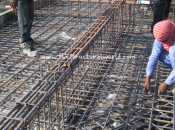

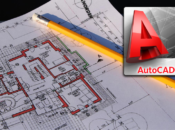
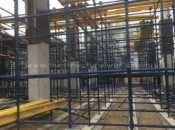
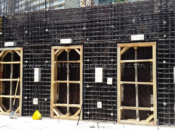
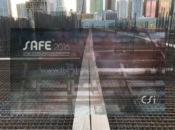
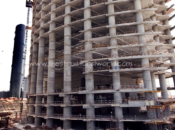


Please explain why the reference back to the ’97 UBC.
Hi Rick, UBC 97 seems obsolete, but nowadays aside from ASCE still a lot of countries are using UBC 97 as their reference code in seismic.
sir can i have a pdf copy of this would like to learn more on dynamic analysis.i woud like to learn etabs as of now been using staad for structural analysis